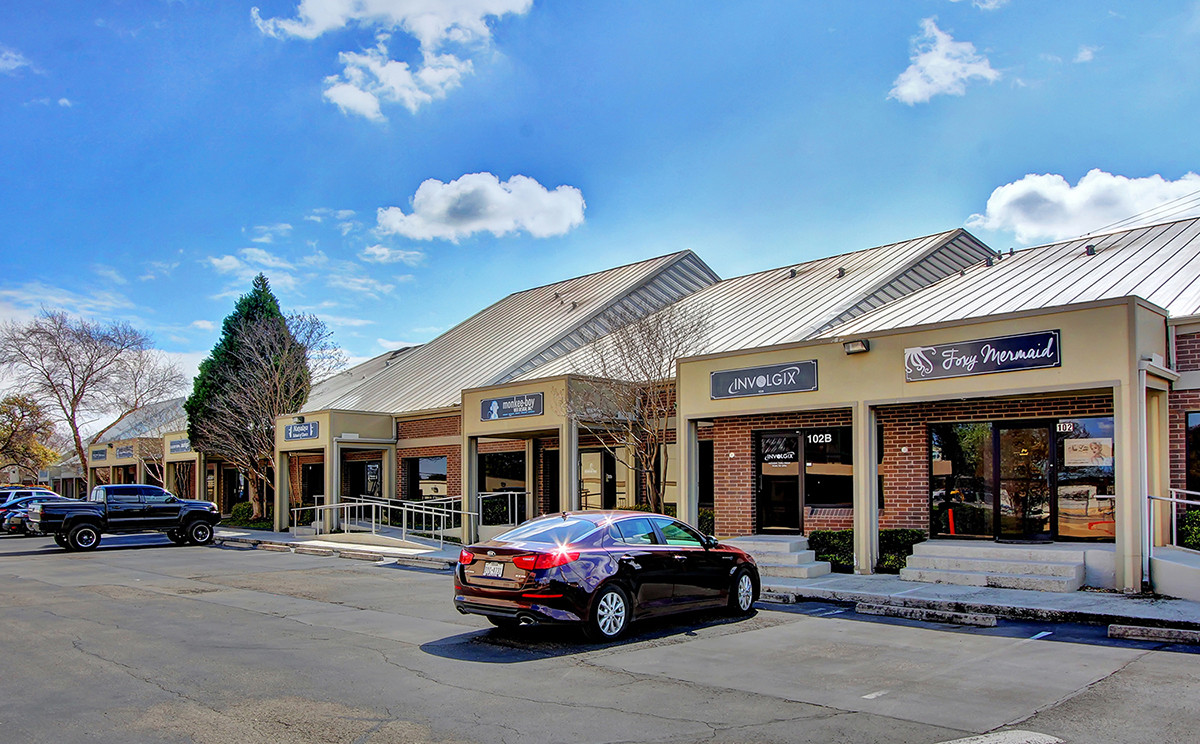BY BRANDI SMITH
The tale goes that Collin McKinney was given the pen he used to sign the Texas Declaration of Independence. At 70, he was the oldest member of the Convention of 1836 at Washington-on-the-Brazos. McKinney’s true pioneer story started long before the convention, but it ends right where ours begins: in Van Alstyne, Texas.
“You have a lot of history here”
The town, which now boasts a population of more than 3,000, had very humble beginnings. It truly began with a community called Mantua, located just a few miles southwest of what is now Van Alstyne. Mantua had been founded in 1854 as a site for a seminary. The school set the tone for the town; gambling, horse racing and liquor sales were all prohibited.
Within a couple years, Mantua’s population grew to roughly 300. But when Houston & Central Railroad came calling in 1872, asking for $1,000 to put a railroad through the town, the rail company was denied. Instead, it purchased neighboring property located in Van Alstyne, named for Maria Van Alstyne, the widow of the railroad’s treasurer and stockholder, William Van Alstyne.
The rail line helped the fledgling city swell in population, eventually drawing the people, businesses and even the First Christian Church – the oldest in Texas – from Mantua. This is where Collin McKinney, namesake of Texas’ Collin County and McKinney, its county seat, was laid to rest.
“You have a lot of history here that is a part of Texas,” said Randy Uselton, president of the Van Alstyne Economic Development Corporation.
“We’re planning before it’s time to build”
Now nearly 150 years in, a lot has changed in what was once a rural community, located 50 miles north of Texas’ second-largest city.
“Dallas is moving this way. We’re not going to be able to stop it,” Uselton said. “U.S. 75 is already set up to come all the way to Van Alstyne and be widened. We know it’s coming.”
Van Alstyne leaders had the foresight to plan for the eventuality that Dallas’ sprawl would stretch that far north.
“The city has been forward looking for generations and thus we have planned ahead for the growth that is coming our way,” said Bill Benton, whose family established its real estate company, Benton Luttrell, just 17 years after Van Alstyne was established.
Planning for future growth included maintaining what makes the community a destination for residents and businesses. The city aimed to preserve its historic downtown while offering opportunity for development in designated areas.
“The city council did a really good job of laying out the city and setting areas that are for industrial or for commercial,” Uselton said. “We’re planning before it’s time to build.”
That forward-thinking approach is what drew city manager Frank Baker to Van Alstyne in 2012.
“I saw the potential to influence change in a community that’s rich in history and on the edge of the urban sprawl,” he said.
Since he came on board nearly four years ago, Baker said he’s focused on identifying deficiencies in resources and services, including utilities, infrastructure, roads and drainage. The city’s also working to update walking trails and park playground equipment.
Van Alstyne is also in the process of increasing its water system capacity, installing larger water mains on the west side of U.S. 75. It’s working on a similar project for the sewer system and is also updating the Wastewater Treatment Plant.
The primary focus, though, is always on managing growth.
“We’re doing that through direct discussions with property owners and developers to discuss their specific ideas,” Baker said. “Those ideas are compared with the community development plans, the city’s design manual and subdivision regulations. If those ideas complement the adopted plans, we work towards making the ideas reality.”
“I sit down and listen”
Van Alstyne’s EDC, founded in 1996, plays a principal role in helping build the future in this historic town, specifically in enticing new businesses to move and convincing existing businesses to stay.
The two-pronged approach begins by reaching out to interested parties with an information-packed brochure highlighting the history and future of Van Alstyne.
“We’re ready for companies to come in and be a part of our community,” Uselton said. “We don’t want them to come in and set up just because we have land. We want them to say, ‘Y’all are easy to work with, so we’re going to come there.’”
Once a business has settled in Van Alstyne, the next challenge is keeping it. That’s where the EDC’s Business Retention Program comes in.
“What I do at my job is I sit down and listen to people: what do they need? How can we help them? Then we bring programs to them in a way that personalizes it for that company that they can stay,” said Uselton.
He illustrated his point by sharing a recent conversation with a Van Alstyne-based business that had outgrown its building.
“We worked with them to get them in a position to stay in the area,” Uselton said. “They’re going to put up a new building, new offices and a new warehouse.”
It’s clear many companies – big and small – have made the choice to stay in Van Alstyne. Texas Star Bank, Benton-Luttrell-Brown Insurance & Real Estate, City Drug Company, the Van Alstyne Leader and Van Alstyne Hardware Company have all been in operation for more than 100 years. Others, such as GCEC Electric & Telecom and Foxworth Galbraith, may not have been there quite as long, but the jobs they’ve created have had a significant economic impact on the community.
“These businesses come to town and they don’t want to leave because they have good employees and a good quality of life,” said Uselton.
“It’s an asset for the community”
Another fairly new addition to the historic town is Grayson County College – South Campus. Built in 2005, it’s already added a new building to keep up with demand and Grayson’s president said there could be more expansion in the not-too-distant future.
“The South campus is definitely on the radar for more buildings and different outreach opportunities,” said Dr. Kim Williams.
The college provides another draw for businesses considering relocating to Van Alstyne: a skilled workforce. Students are able to earn Associate degrees in a variety of fields, including welding, electrical technology and medical laboratory technology. They’re also able to get their vocational nursing certificate.
Already serving approximately 500 students each term, Dr. Williams predicts Grayson’s south campus population will grow right along with the city.
“I think we all work well together. I do think it’s an asset for the community to have something like this in a town this size,” she said.
“A can-do attitude is contagious”
On Van Alstyne’s horizon both literally and figuratively is a massive project sure to have a substantial impact. Called Mantua, the 3,017-acre development stretches from Van Alstyne into neighboring Anna.
“When fully developed, Mantua will be among the largest developments in the DFW region,” said Benton, the developer whose family started its business in Van Alstyne three generations ago. “Its most intriguing attribute is the reality that Mantua will have the most freeway frontage, access and commercial potential of any mixed-use planned community development in North Texas.”
The project, which spans nearly 5 square miles, hasn’t started construction yet. Benton said that will be determined by “the continued march of development north on U.S. 75 and the owner’s timing.”
However, as it develops, Mantua will have an increasingly dramatic and positive influence on Van Alstyne and Anna, Benton predicted.
“It will do that by stimulating a stronger mix of land uses, property values and related revenue opportunities,” he said. “Location is key, but the history and culture of our community that has a can-do attitude is contagious.”
The city is also eyeing other opportunities for development, having recently annexed 380 acres for mixed use.
“We have retail and commercial identified along the thoroughfare corridors. Further into the property, there will be single-family and two-family homes,” Baker said.
Meantime, D.R. Horton and Stonehollow Homes are working on a multi-phase subdivision called Georgetown, while Circle Plat Homes is redeveloping lots in some of the city’s more historic areas.
Baker highlighted a variety of other new additions to Van Alstyne’s business community, including O’Reilly Auto Parts, Golden Chick and Palladium USA International. Even more is on its way.
“I believe we’re one of the finalists for the distribution center to be put in our area that will service Dallas,” Uselton said. “Hopefully we’ll have some finalization on that in the near future.”
“The potential here is great”
Amidst the growth and changing landscape within Van Alstyne, leaders there understand the value of maintaining its quality of life.
“People are seeing that Van Alstyne is a beautiful town,” said Uselton. “I can see the stars at night here, but in fifteen minutes I’m into Dallas.”
Along with its beauty, history and key location come endless recreational opportunities and a lauded school system.
“I think the potential here is great,” said Dr. Williams.
Added Baker: “Van Alstyne, Texas is one of the best places in this nation to work, live and play.”










